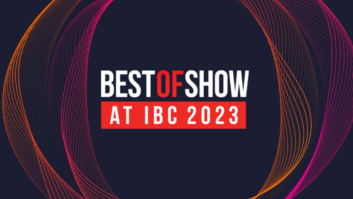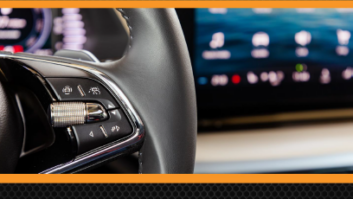
HD Radio’s Booth at the 2013 Consumer Electronics Show
credit: Photo courtesy of iBiquity Just since December, when I last wrote about HD Radio, it seems that new energy is being breathed into the format. The technology had a significant presence at the Consumer Electronics Show, and sales figures continue to climb: 4.5 million radios in year 2012 alone, according to Bob Struble of iBiquity. This is especially encouraging because these increased sales are being driven by a resurgent automobile industry. HD Radio needs car receivers to move consumers to adopt this technology.
It also appears that multicasting, the ability to offer extra radio channels with one license, is finally beginning to develop traction with niche broadcasters. This is an ideal technology for foreign-language broadcasting, for example, a large portion of which has been confined to the greatly inferior SCA systems developed 50 years ago. For a modest investment, it is now possible to reach millions of people with programming that might not be popular enough to justify the huge investment for an analog FM service, and at an audio quality to be proud of. Many stations such as NPR affiliates have shown that if people want a particular niche format, they will buy the radios to get it.
Why Push Now?
Here at RWEE, we have covered every aspect of the HD Radio system and followed the technology as it has improved over the years. HD Radio has improved in every aspect of deployment from its early days, including cost, efficiency, simplicity and reliability. This is especially true of the FM version, which always held more promise than the AM version.
Reasons to avoid investing in HD slowly have been disappearing. Over the last four years, when capital investments in radio hit a low point due to the recession, technology improvements continued to be introduced, but few stations had the budget to upgrade. As we are exiting a recession and capital budgets are being restored, it is a good time to look at HD Radio again.
The first wave of digital investments began in about 2003, so it has actually been about 10 years since the introduction. If you are one of those stations that jumped in at the beginning, it is time to update. There are lots of new features and capabilities now.
Most important, growing numbers of listeners and radio dealers are watching us closely at the moment. It is important to impress this group or they will lose interest and set the whole process back again. And that could be the end of radio’s dominant position in media, which we have enjoyed for so many years.
Dashboard Competition
While many in our industry feel that analog is and always will be good enough, it is hard to for me to continue to believe this.
It is in response to the weakness of the radio industry that so many new technologies have come to pass and been accepted enthusiastically by consumers. Digital music storage and transmission, portable music listening devices, satellite radio and now Internet radio have all developed as ways to pull apart the dominance of the old radio system, which is mostly a memory at this point. These new technologies offer consumers more choices and more control over what they hear and when. If the radio industry does not evolve to meet this competition, it eventually will lose its audience. The slow erosion is staring us in the face already.
Perhaps the most important battlefield for consumers is in the automobile dashboard. Radio had an incredible advantage over other technologies for many decades, as it was the only way to get to mobile listeners with new or fresh content. This isn’t true any longer. In my opinion, it is the car listeners that will decide the winner from amongst the mobile options that are now proliferating in the latest autos. This will then move the home market.
Dress to Impress
So let’s put on our best and show our new audiences just what we can do with digital. It’s time to improve your digital coverage with higher power HD — with the new car radios, you can get further than your existing analog. Get that time alignment into shape, for goodness sake. Think about ways that messaging, and even graphics, might add to your station. Buy some new radios for the staff and maybe play around with some new formats on that multicast channel. Check out the interactive radio software that can make a direct connection to your listeners.
To help this effort, we plan to offer a regular column of HD Radio tips and tricks for the 2013 year. I hope that you enjoy them, and we welcome any tips and suggestions that readers wish to offer. Since this is an engineering publication, we will tend to concentrate on the technology side of HD, but all submissions are welcome. If I get enough of them I can build a column from just reader suggestions. Write to me at [email protected].
Michael LeClair is chief engineer for radio stations WBUR(AM/FM) in Boston; he has been technical editor of Radio World Engineering Extra since its inception in 2005.












